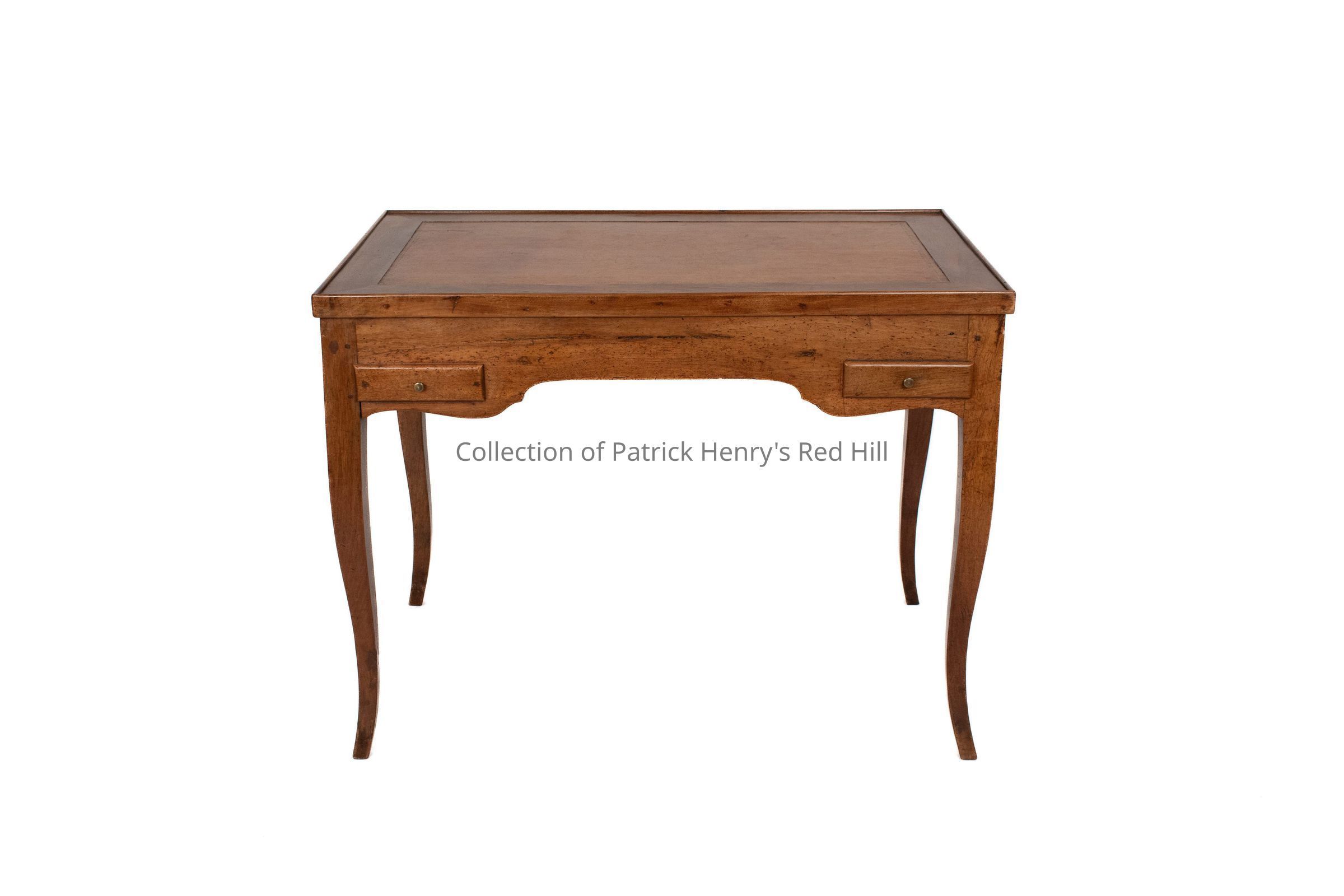Notes
This removable game table top was made with its matching table (2023.45a) in France in the third quarter of the 18th century, during the reign of King Louis XV (1710–1774). The table is a "plain and simple" example of furnishings made at that time. When removed, the top reveals a recessed board for playing backgammon.
The top is reversible, with the obverse partially covered in leather. This is meant for everyday usage. The reverse is fully covered in red baize for use in card games. The top is completely removed and set aside when playing backgammon in the table.
Backgammon is a two-player game of contrary movement in which each player has fifteen pieces known traditionally as men (short for "tablemen"), but increasingly known as "checkers" in the US, analogous to the other board game of Checkers. The backgammon table pieces move along twenty-four "points" according to the roll of two dice. The game's objective is to move the fifteen pieces around the board and be first to bear off, i.e., remove them from the board. The achievement of this while the opponent is still far behind results in a triple win known as a backgammon, hence the game's name.
By the 18th century, backgammon had become popular among the English clergy and upper classes and soon made its way to the American colonies. Many backgammon tables appear in colonial inventories, and backgammon games (and monetary losses) are mentioned in many period diaries.
Patrick Henry owned a backgammon table at Red Hill. It is listed in his estate inventory taken after his death in 1799 as "1 back gamon Table" worth £2.08. It is surmised this table was simple in nature and made from walnut, similar to many other furnishings owned by Henry.
This table was purchased using funds from the estate of Dr. Bruce English on November 10, 2023.
